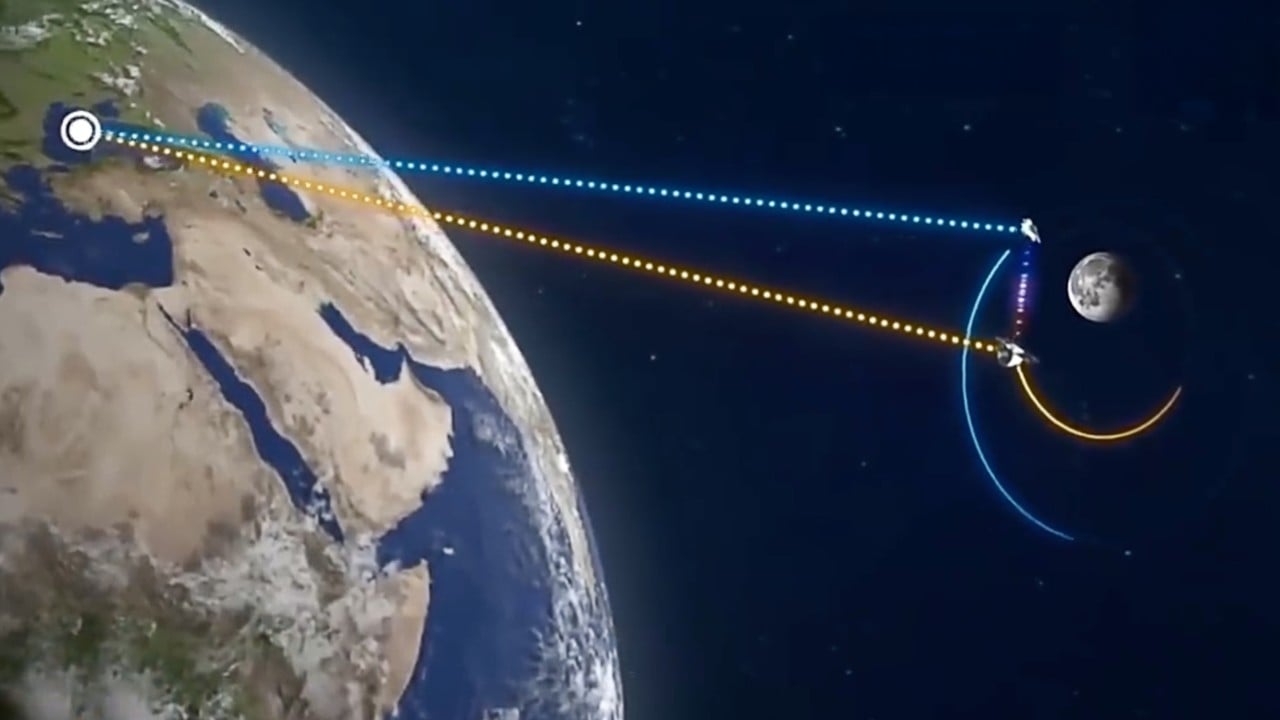China’s Tiandu-1 satellite has taken part in a laser ranging experiment in Earth-moon space under strong daylight conditions, which the satellite’s developer says is the first test of its kind.
Advertisement
China’s Deep Space Exploration Laboratory (DSEL) ran a laser ranging experiment on April 26-27 from the Earth to the Tiandu-1 experimental satellite, which has been orbiting the moon since its launch in March last year, according to state broadcaster CCTV.
Satellite laser ranging measures the distance to orbiting satellites, which involves a laser at an observatory sending pulses of light to the satellite which then bounce back, allowing for distance to be calculated.
While satellite laser ranging tracks Earth-orbiting satellites during the day, conducting these experiments in Earth-moon space has previously been limited to nighttime, as strong daylight can interfere with the laser signal and cause signals to be lost in background noise.
This allows limited observation windows and data collection for satellites in Earth-moon and lunar orbit, which are vital to China’s push for expanding its presence on the moon.
The test, which DSEL told state media was the world’s first Earth-moon laser ranging test under strong daylight conditions, expands the limits of the technology and will help with carrying out future deep space missions.
Advertisement
The Tiandu-1 satellite was launched into space alongside the Tiandu-2 and Queqiao-2 relay satellites in March last year. The mission was intended to help verify new technologies in the construction of an Earth-moon communication and navigation system.

